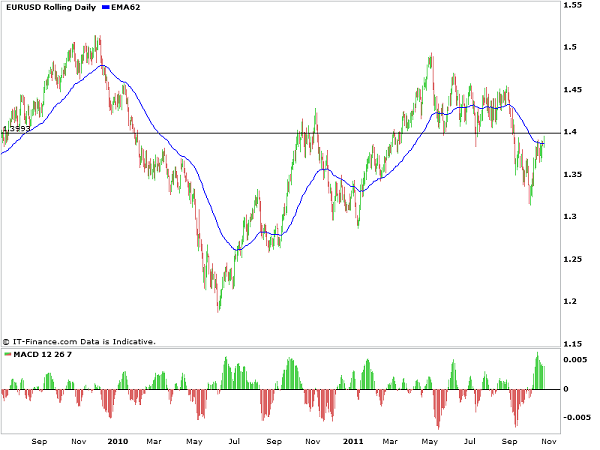To what has become the status quo, Monday’s currency markets reflected the underlying pessimism which has been plaguing the Eurozone over the past months. The Euro traded lower against the dollar during the morning as the weekend’s unconvincing summit on the European debt crisis turned out to be one of the most unconvincing meetings of leading European figures in terms of instilling confidence in the proposed solutions to Europe’s problems.
The Euro responded to the failure to, for a start, reach a decisive solution to the Greek debt problem which ended up going down the familiar route of trying to persuade the banks to take on a portion of the debt. This happened despite not even reaching an agreement on how Europe’s banks could be recapitalised in light of the uninspiring outcome making the newly-created EFSF available to banks only as a fund of the last resort if both governments and private investors fail to be able to support them. The conclusion from this is that the EFSF, for all its hype as a potential saviour for Europe’s indebted countries, will only come into play after a bank has sold the majority of its assets and expanded national debt in trying to stay afloat. The prognosis for many of the regions sickly banks, and their national finances still looks very grim as a result.

The euro, despite this pessimism, attempted to surge higher during the afternoon, perhaps buoyed by the earlier resolution of the Aussie dollar which was supported by the positive news from China that its manufacturing output had expanded for the first time in four months. Whether the euro can move any higher is another matter in the coming days as meetings still continue between Europe’s financial elite in an attempt to solve the ongoing problems. The euro is struggling against the USD to move higher and the announcements from ECB board member Christian Noyer that the central bank is ‘at the limit’ of what it can do under its mandate, it may become apparent that interest rates may have to be lowered in the future as the region fights of the potential of a double-dip recession.
The USD, on the other hand, will strengthen again if investors move to risk aversion if the European issues remain unresolved. If this occurs it will further halt any rebound that the euro was likely to have against the 1.400 level, where there already exists some formidable resistance to break through. It would take a massive boost of confidence, and some very proactive leadership, in order to break out of what may become a longer term downtrend for the currency. The coming days may well set the toe for the remainder of the year and, with the stagnation of agreement amongst Europe’s elite and the tentative situation that several countries are in it may be wiser to look for opportunities to join the bears and sell into any short term rallies. Having said this, the potential for a salvation package to be agreed upon, and more importantly put into action, could change the fortunes of the regions currency but this remains to be seen.
Comments (No)